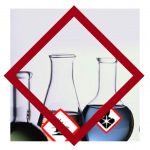The rapid progress in scientific and technological knowledge has led to a large increase in the production and use of natural and synthetic chemicals that are everywhere around us today from tax receipts to industrial products, from healthcare to agriculture, transport, construction, to energy, up to consumer goods such as detergents, cosmetics, fabrics, toys, medical surgical devices, biocides.
Chemistry plays a fundamental role in the development of society and has contributed to improving the quality of life, but it has also opened up new exposure and risk scenarios for human and environmental health that require targeted intervention.
Complete information on the effects that chemicals have on human health and the environment is not always available, and we must therefore ensure that we treat chemicals with care, so as to minimize any harmful impact from exposure to them with adequate management of chemicals along the entire life cycle from production to disposal.
To this end, there are a number of national and international structures dedicated to the regulation, control, and surveillance of the production and use of chemical products.
The priority objective today is the sustainability of development for the protection of health, and it is precisely from chemistry that answers come with strategies for the development of safer production processes, with the improvement of the environmental compatibility of products, and with the study and development of circular economy processes.



